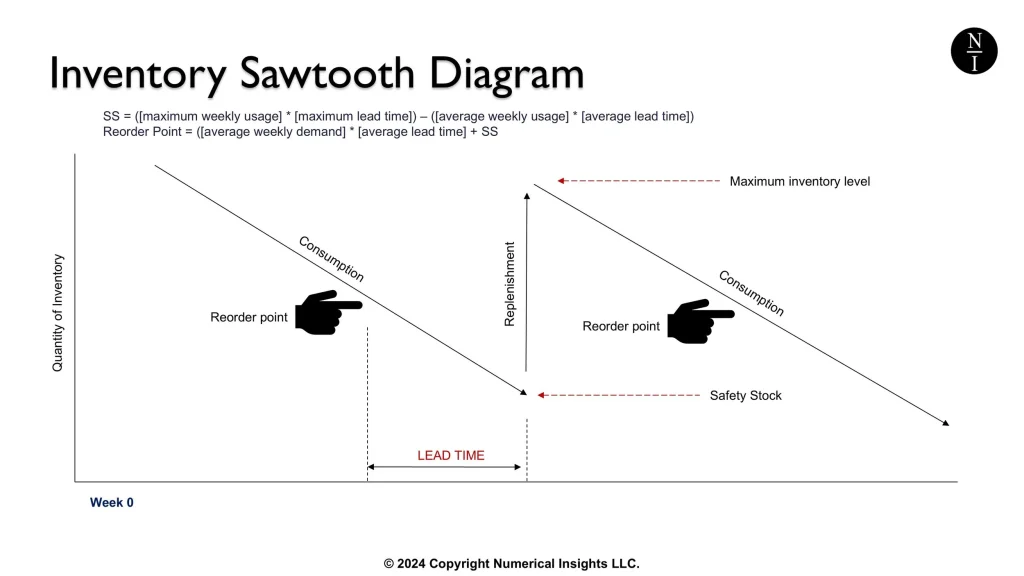In the world of Australian real estate, we’re constantly navigating a sea of data: auction clearance rates, median house prices, interest rate forecasts. But what if the biggest factor set to influence the market isn’t in the headlines? What if it’s lurking just beneath the surface, unseen and uncounted?
Welcome to the world of “shadow inventory.”
It’s a term that sends a shiver down the spine of seasoned real estate agents and makes investors sit up and listen. It’s the ghost in the machine of the property market—a potential wave of real estate for sale that is currently hidden from view. For months, we’ve grappled with a paradox: despite high interest rates and cost-of-living pressures, property prices in cities like Sydney and Perth have remained stubbornly high. The primary reason? A critical lack of stock.
But what if that lack of stock is an illusion? What if thousands of properties are waiting in the wings, ready to hit the market? This is not just a theory; it’s a ticking clock, and understanding it is crucial for anyone involved in real estate Australia-wide in 2024 and beyond.
In this deep dive, we will unpack the concept of shadow inventory, identify its key components, and analyze the potential impact on every corner of the market—from real estate NSW to the booming suburbs of Perth.
Live Australian Real Estate Market Snapshot
(On a live blog, this section would be powered by a data feed and update daily. The data below is illustrative of what would be featured.)
- Last Updated: [Current Date]
- National Listings Volume (New): 38,540 (Down 2.1% month-on-month)
- National Total Listings: 145,210 (15% below the 5-year average)
- National Median ‘Days on Market’: 32 days
- Mortgage Arrears (30-89 days past due): 1.6% (Source: RBA)
- RBA Official Cash Rate: 4.35%
What Exactly Is Shadow Inventory? Demystifying the Unseen Market
Shadow inventory, in its simplest terms, refers to a supply of properties that are not currently listed for sale on platforms like Domain Real Estate or promoted by agencies like Ray White, but have a high probability of coming onto the market in the near future.
It’s not just “off-market” listings that a savvy real estate agent might know about. It’s a broader, more systemic pool of potential supply. Think of it as a reservoir held back by a dam. The market we see today is the river below the dam. Shadow inventory is the massive body of water behind it, and the economic climate determines whether the floodgates open.
This inventory can be broken down into three main categories:
1. Distressed Properties (The Banks’ Backlog)
This is the most classic form of shadow inventory. It comprises properties where the owner has defaulted on their mortgage and the lender is in the process of repossession (mortgagee-in-possession).
- Why is it “Shadow”? Banks and lenders have no interest in flooding the market with foreclosed homes. Doing so would drive down property values, negatively impacting the value of their entire mortgage portfolio. Instead, they often hold these properties, sometimes performing minor renovations, and then release them slowly and strategically to the market to maximize their recovery price.
- The Current Situation: While official mortgage arrears are rising, they are still low by historical standards. However, economists are watching this space closely. The full impact of the “fixed-rate cliff” may not have been felt yet, and any significant increase in unemployment could accelerate defaults.
2. Delayed Listings (The Homeowners’ Dilemma)
This is arguably the largest and most unpredictable component of shadow inventory in Australia today. It consists of properties owned by individuals who need or want to sell but are holding off for various reasons.
- “The Wait-and-Seers”: Homeowners who believe prices will rise further or are waiting for interest rates to fall before they make their move. They don’t want to sell in what they perceive as an uncertain market.
- “The Mortgage-Stressed”: A significant and growing group. These are households who are technically servicing their mortgage but are under extreme financial duress. They’ve cut all discretionary spending, drawn down savings, and are just barely hanging on. Selling is their last resort, and they are holding out for as long as possible, hoping their situation improves.
- “The Life Changers”: People who would normally sell due to life events (divorce, death, job relocation, empty nesting) but have paused their plans due to market uncertainty or the sheer difficulty of finding their next home in a low-stock environment.
3. Developer and Builder Stock (The Unsold Pipeline)
This refers to completed or near-completed properties in new developments (apartments, townhouses, house-and-land packages) that remain unsold.
- The Developer’s Strategy: Similar to banks, large developers will often hold back the release of their final block of stock to avoid creating a glut in a specific area and driving down the project’s overall value. They release units in stages to match demand.
- Builder Liquidations: A more concerning trend is the rise in residential construction company insolvencies. When a builder goes under, their projects can stall, eventually being sold off by liquidators, often at a discount. This can suddenly inject unexpected supply into a local market.
Why Now? The Economic Triggers Priming the Shadow Inventory Pump
The concept of shadow inventory isn’t new, but it has become acutely relevant due to the unique economic cocktail of the post-pandemic era.
- The Fixed-Rate Cliff: Hundreds of thousands of mortgages taken out at record-low fixed rates of ~2% have now reverted to variable rates of 6%+. This payment shock is the single biggest catalyst for mortgage stress. (Source: Reserve Bank of Australia Financial Stability Review)
- Cost of Living Crisis: Non-mortgage costs—from groceries and fuel to insurance—have soared, eroding household savings buffers that might have otherwise helped manage higher loan repayments.
- High Property Prices: While great for sellers, high prices create a “catch-22”. Many potential downsizers or upgraders are hesitant to list their home because they fear they won’t be able to afford their next one, contributing to the “Delayed Listings” pool.
The Potential Impact: A Gentle Trickle or a Market-Altering Tsunami?
This is the multi-trillion-dollar question. The release of shadow inventory could manifest in two distinct ways, and the outcome will vary dramatically between different markets, from the high-density real estate Sydney market to the sprawling suburbs of real estate Brisbane.
Scenario 1: The Flood (A Buyer’s Market Emerges)
In this scenario, a confluence of factors (e.g., a small rise in unemployment, another interest rate hike) forces a large number of mortgage-stressed households and hesitant sellers to list their properties simultaneously.
- The Effect:
- Rapid Increase in Listings: Buyers would suddenly have a huge amount of choice. The “fear of missing out” (FOMO) would evaporate, replaced by a “fear of overpaying” (FOOP).
- Price Stagnation or Correction: With supply outstripping demand, vendors would be forced to compete on price. Days on market would blow out, and auction clearance rates would plummet. We’d see a clear shift to a buyer’s market.
- Increased Negotiating Power: Buyers could make lowball offers, demand favourable terms, and take their time with due diligence and a building inspection.
Scenario 2: The Gradual Release (The Market Absorbs It)
This is the more likely scenario, according to most mainstream economists. It posits that the shadow inventory will seep into the market over a prolonged period rather than all at once.
- The Rationale:
- Lender Forbearance: Banks are more willing than ever to work with struggling borrowers through hardship programs, as mass foreclosures are in no one’s interest.
- The Supply Counterbalance: The single most powerful force supporting the Australian property market is the chronic structural undersupply of housing, coupled with record-high population growth. For every distressed property that comes online, there are often multiple new migrant families or first-home buyers ready to compete for it.
- Staggered Motivation: Not all “delayed sellers” will be motivated to list at the same time. A small interest rate cut might entice some, while others might wait for two or three.
In this scenario, the release of shadow inventory acts not as a market-crashing flood, but as a necessary release valve, bringing the market back towards a state of equilibrium, cooling price growth to more sustainable levels.
A State-by-State Analysis: Where is Shadow Inventory Risk Highest?
The risk and potential impact of shadow inventory are not uniform across real estate Australia. Local economic conditions, market dynamics, and mortgage debt levels create a varied landscape.
Sydney and Melbourne Real Estate: The High-Stakes Arenas
The real estate Sydney and Melbourne real estate markets carry the highest potential risk due to their large mortgage sizes. A higher average loan means a greater dollar-value increase in repayments, placing more households in the mortgage-stressed category. However, this risk is mitigated by their incredibly strong and diverse economies and their status as the primary destinations for overseas migration. Any shadow stock in desirable areas is likely to be absorbed quickly. The real risk lies in the outer-fringe suburbs and high-supply apartment corridors where wage growth is weaker and buyer demand is less deep.
Brisbane and Queensland Real Estate: The Migration Magnet
The real estate Brisbane market, along with the broader real estate QLD landscape (including the Gold Coast real estate market), has benefited immensely from interstate migration. This creates a strong buffer of buyer demand. However, the rapid price appreciation over the past three years means many recent buyers purchased at the peak with large loans. These are the households most at risk of becoming “delayed sellers” or, in a worst-case scenario, distressed sellers. The key here will be the continued strength of the Queensland economy.
Perth Real Estate: The Outlier
Real estate Perth is arguably the market least exposed to a negative shadow inventory shock. Its relative affordability means smaller average mortgages and less stress on households. The booming state economy, driven by the resources sector, provides high-paying jobs, and the city has the tightest rental market in the country, encouraging real estate investing. Any shadow stock that does emerge in areas from Swan View to Halls Head Real Estate is likely to be snapped up almost immediately by eager buyers and investors who have been starved of choice.
Adelaide and South Australia Real Estate: The Stable Performer
The SA real estate market, particularly Adelaide real estate, is known for its stability. While it has seen strong growth, it didn’t experience the same frenetic peaks as the eastern capitals. This has resulted in a more sustainable market with lower levels of mortgage stress. Local agencies like Turner Real Estate report consistent, steady demand rather than panicked buying. Shadow inventory here is expected to be a trickle rather than a flood.
Regional Markets: A Mixed Bag
For regional hubs, the story is nuanced. Lifestyle hotspots that boomed during the pandemic, like real estate Kiama on the NSW coast or real estate Margaret River in WA, could have pockets of shadow inventory from sea-changers who overextended themselves. Conversely, established regional centres with diverse economies, serviced by long-standing agencies like Kevin Hicks Real Estate in Victoria or Elders Real Estate nationwide, are likely to prove more resilient.
What Shadow Inventory Means for YOU: A Practical Guide

Understanding this hidden factor is key to making informed decisions. Here’s how it affects different players in the real estate game.
For the Home Buyer
Shadow inventory could be your best friend. A gradual increase in listings means more choice and less competition.
- Your Strategy: Be patient but prepared. Get your finances pre-approved so you can act decisively when the right property appears. Don’t be afraid to make offers below the asking price, especially on properties that have been on the market for a while. Sign up for alerts from every major portal and local real estate agents to be notified the second new stock comes online.
For the Seller
The prospect of more competition is daunting. If a wave of shadow inventory hits your suburb, you’ll need to stand out.
- Your Strategy: Presentation and pricing are everything. Invest in professional real estate photography and consider minor cosmetic upgrades. Work with a top local agent from a network like Professionals Real Estate or a trusted independent like Holdsworth Real Estate. They will have their finger on the pulse of local supply and can advise on a pricing strategy that attracts buyers without underselling your asset. Being the best-presented property in your price bracket will be crucial.
For the Real Estate Investor
Real estate investing in this environment is about balancing risk and opportunity.
- Residential Investors: An increase in distressed sales could present opportunities to buy below market value. However, the true prize remains in the rental market. The demand for real estate rentals is so acute that even if more properties become available to rent, vacancy rates will remain extremely low. Your focus should be on properties with strong rental appeal. A proactive property manager is essential to navigate this landscape.
- Commercial Investors: The world of commerce and commercial property has its own version of shadow inventory, particularly in the office sector. Vacancy rates in older, B-grade office buildings are high as businesses flock to premium spaces. This creates a “shadow inventory” of undesirable office stock. For investors, the opportunity lies in resilient sectors like industrial logistics or in converting distressed commercial assets. The commercial real estate Perth market, for instance, is seeing strong demand due to the robust local economy.
How to Track the Unseen: Monitoring Shadow Inventory Indicators
You can’t get a daily report on shadow inventory, but you can monitor the key indicators that signal its potential release:
- Total Listing Volumes: Keep a close eye on data from sources like CoreLogic and SQM Research. A sudden, sustained spike in the number of properties for sale is the most direct sign. (Source: CoreLogic Australia Research)
- ‘Days on Market’: When properties start taking longer to sell, it indicates that supply is beginning to outweigh demand.
- Lender Reporting: Follow the quarterly and annual reports from the major banks (CBA, Westpac, NAB, ANZ). They contain detailed information on their mortgage portfolios, including the percentage of loans in arrears.
- Auction Clearance Rates: A consistently falling clearance rate is a forward indicator of market weakness and could signal that more sellers are about to enter the market.
Conclusion: A Return to Normality, Not a Sign of Collapse
The existence of a shadow inventory is not a prophecy of doom for the Australian property market. In fact, its gradual release may be exactly what the market needs—a return to a more balanced, sustainable state where buyers have choice, and price growth is tied more closely to economic fundamentals.
The powerful tailwinds of record migration and chronic housing undersupply provide an enormous safety net that will likely absorb this hidden stock over time. The tsunami scenario remains a low-probability, high-impact “black swan” event. The more probable outcome is a rebalancing that provides opportunities for astute buyers and investors.
The key is to remain informed. By understanding the forces at play beneath the surface, you can navigate the complexities of the market with confidence, whether you’re searching for real estate for sale in a niche market like Real Estate Broke or considering a major acquisition in the heart of a capital city. The shadows are where the savvy find their advantage.
Conclusion: A Return to Normality, Not a Sign of Collapse
The existence of a shadow inventory is not a prophecy of doom for the Australian property market. In fact, its gradual release may be exactly what the market needs—a return to a more balanced, sustainable state where buyers have choice, and price growth is tied more closely to economic fundamentals.
The powerful tailwinds of record migration and chronic housing undersupply provide an enormous safety net that will likely absorb this hidden stock over time. The tsunami scenario remains a low-probability, high-impact “black swan” event. The more probable outcome is a rebalancing that provides opportunities for astute buyers and investors.
The key is to remain informed. By understanding the forces at play beneath the surface, you can navigate the complexities of the market with confidence, whether you’re searching for real estate for sale in a niche market like Real Estate Broke or considering a major acquisition in the heart of a capital city. The shadows are where the savvy find their advantage.Frequently Asked Questions (FAQ)
Q1: What is the difference between “off-market” properties and “shadow inventory”?
A: “Off-market” refers to specific properties a real estate agent is selling quietly without public advertising. “Shadow inventory” is a much broader, aggregated pool of potential listings across the entire market, including distressed, delayed, and unsold developer stock, which are not yet even in the hands of an agent.
Q2: Are there official statistics on the size of Australia’s shadow inventory?
A: No, and that’s why it’s a “shadow” inventory. It cannot be precisely measured. Analysts estimate its size by looking at secondary indicators like the number of people in mortgage stress, historical sales volumes, and developer project pipelines.
Q3: If shadow inventory is released, will rent prices finally go down?
A: It’s unlikely to have a major impact. Most of these properties will be for sale, not for rent. While some may be purchased by investors and added to the rental pool, the current rental shortage is so severe that it would take a monumental increase in supply to cause rents to fall meaningfully.
Q4: As a buyer, how can I find out about distressed properties?
A: It can be difficult as banks often use mainstream real estate agents to sell these properties quietly to avoid spooking the market. The best way is to build a strong relationship with several active agents in your target area and let them know you are a prepared buyer ready to act on any opportunities, including mortgagee sales.
Q5: Is shadow inventory a risk for the New Zealand real estate market too?
A: Yes, the real estate NZ market faces very similar dynamics. New Zealand also experienced a massive property boom followed by one of the fastest interest rate hiking cycles in the world, creating the same pressures of mortgage stress and delayed listings that contribute to a shadow inventory.











